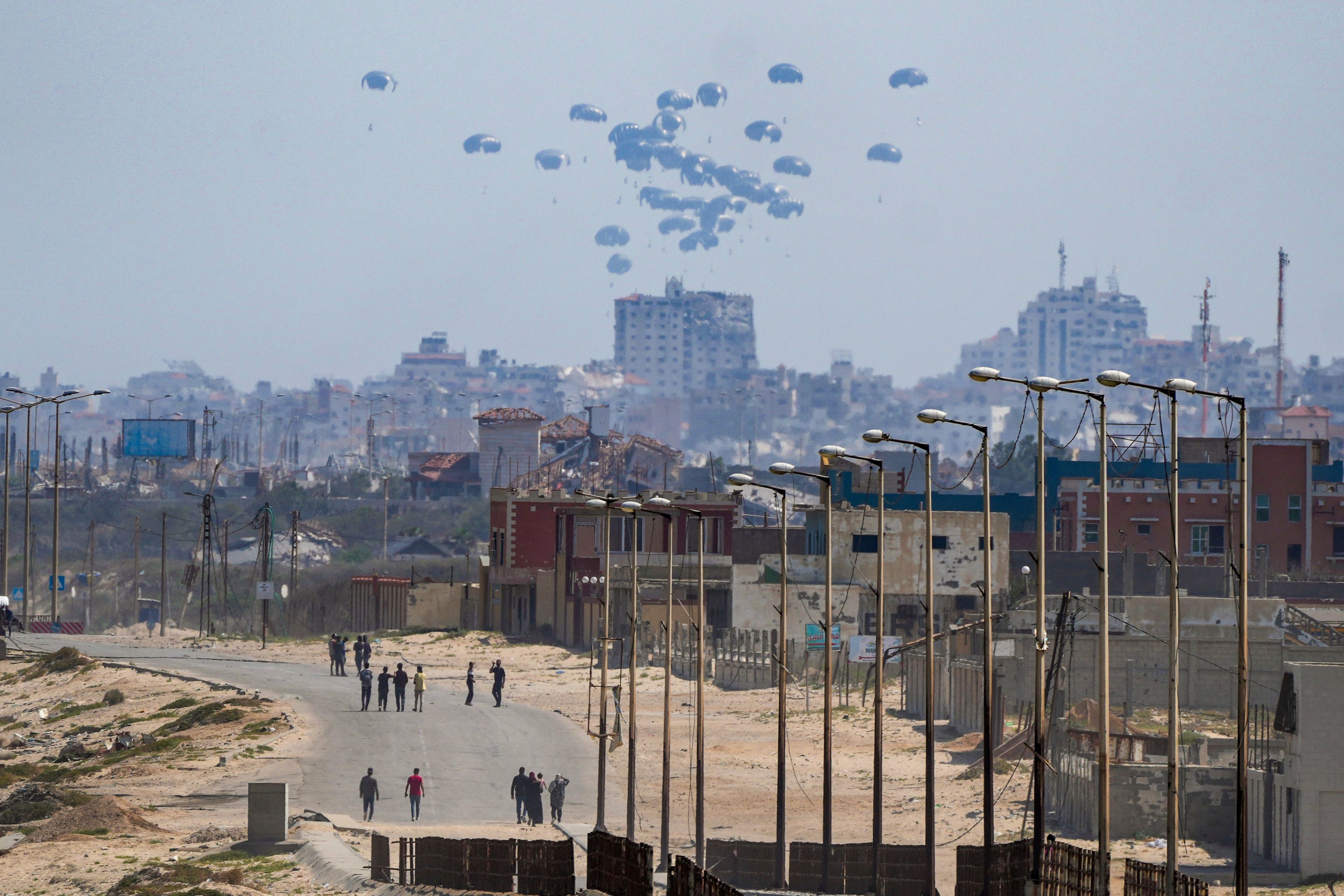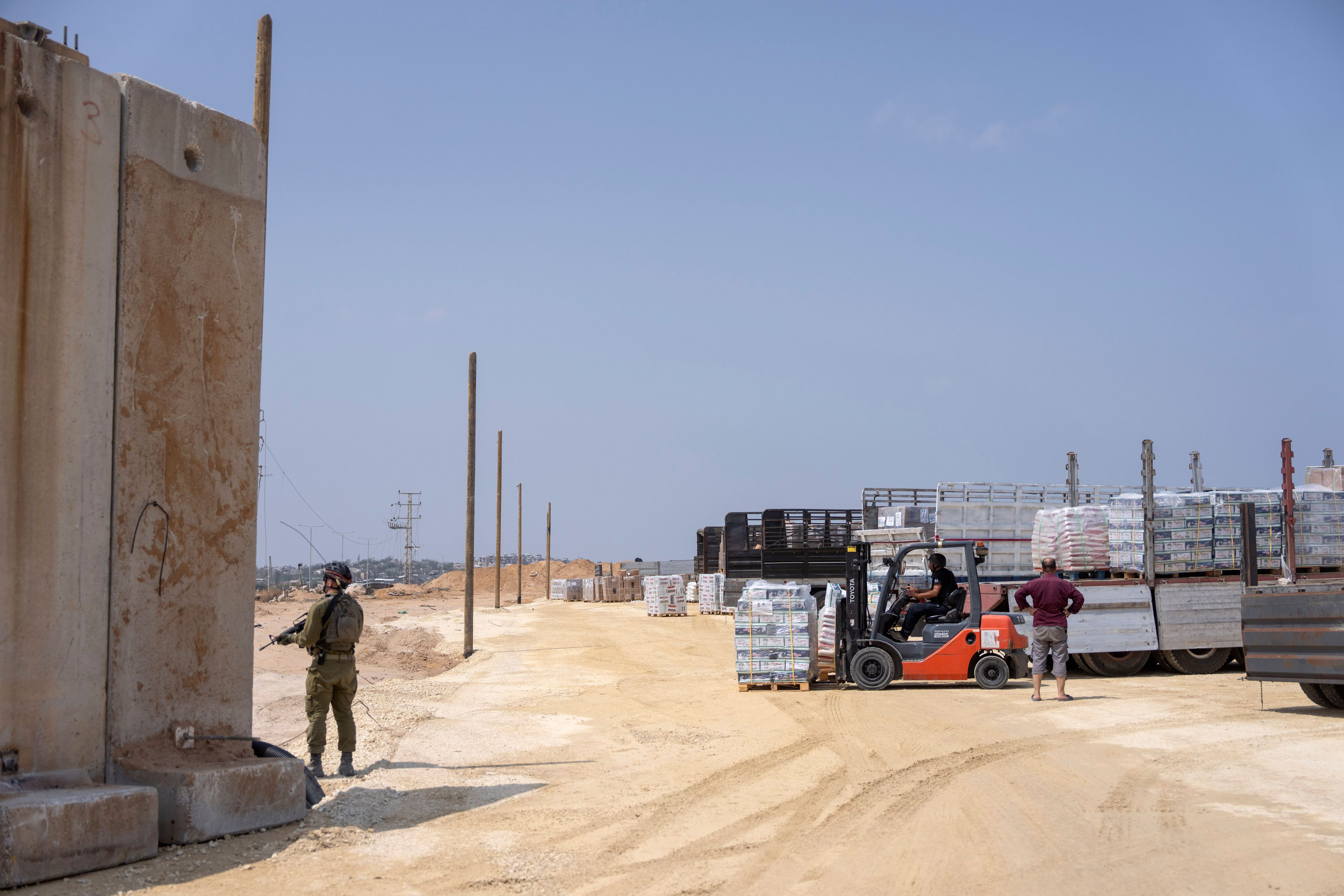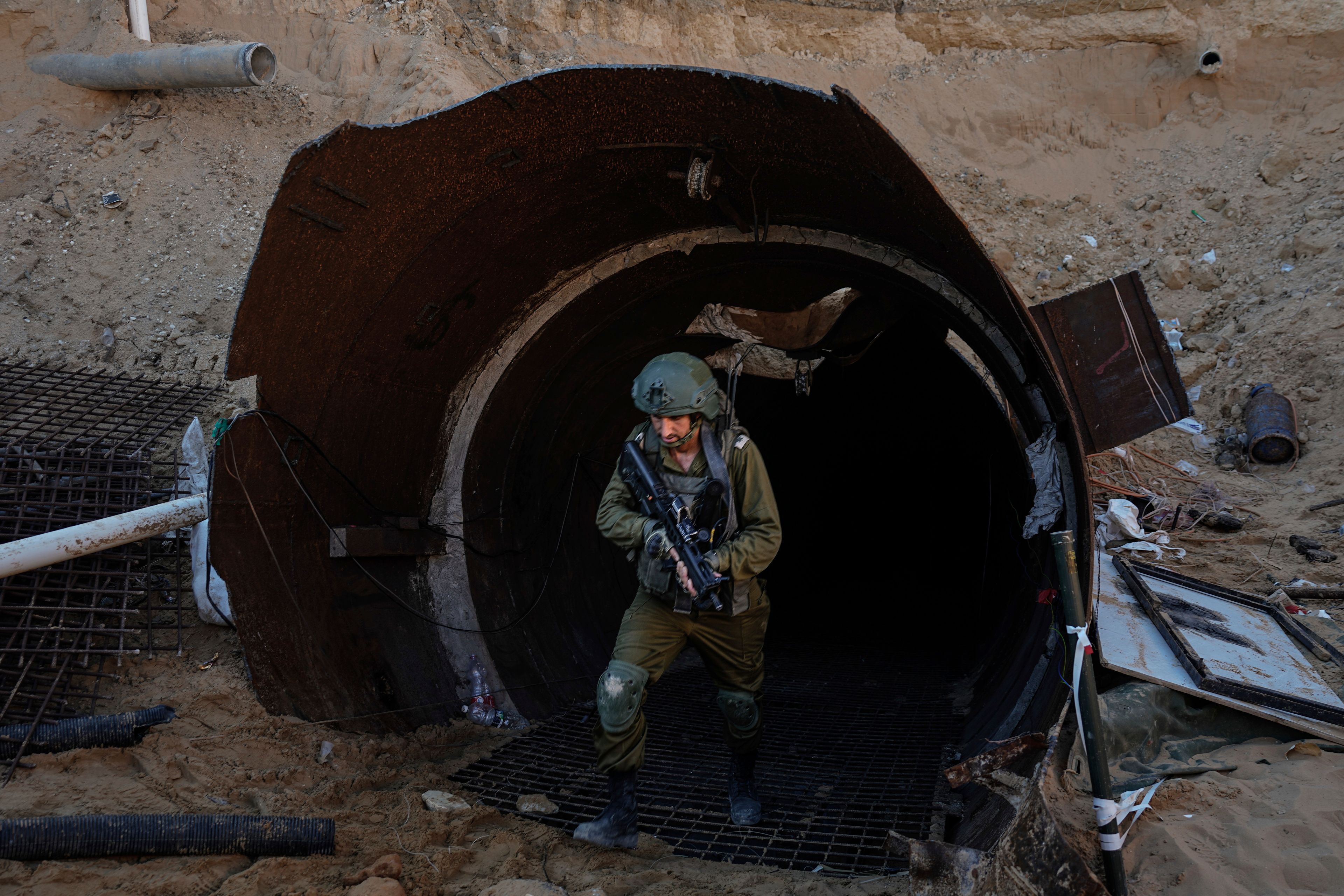Netanyahu mulls plan to empty northern Gaza of civilians and cut off aid to those left inside
JERUSALEM (AP) — Israeli Prime Minister Benjamin Netanyahu is examining a plan to seal off
JERUSALEM (AP) — Israeli Prime Minister Benjamin Netanyahu is examining a plan to seal off humanitarian aid to northern Gaza in an attempt to starve out Hamas militants, a plan that, if implemented, could trap without food or water hundreds of thousands of Palestinians unwilling or unable to leave their homes.
Israel has issued many evacuation orders for the north throughout the yearlong war, the most recent of which was Sunday. The plan proposed to Netanyahu and the Israeli parliament by a group of retired generals would escalate the pressure, giving Palestinians a week to leave the northern third of the Gaza Strip, including Gaza City, before declaring it a closed military zone.
Those who remain would be considered combatants — meaning military regulations would allow troops to kill them — and denied food, water, medicine and fuel, according to a copy of the plan given to the Associated Press by its chief architect, who says the plan is the only way to break Hamas in the north and pressure it to release the remaining hostages.
The plan calls for Israel to maintain control over the north for an indefinite period to attempt to create a new administration without Hamas, splitting the Gaza Strip in two.
There has been no decision by the government to fully carry out the so-called “Generals’ Plan,” and it is unclear how strongly it is being considered.
One official with knowledge of the matter said parts of the plan are already being implemented, without specifying which parts. A second official, who is Israeli, said Netanyahu “had read and studied” the plan, “like many plans that have reached him throughout the war,” but did not say whether any of it had been adopted. The officials spoke on condition of anonymity because the plan is not supposed to be discussed publicly.
On Sunday, Israel launched an offensive against Hamas fighters in the Jabaliya refugee camp north of the city. No trucks of food, water or medicine have entered the north since Sept. 30, according to the U.N. and the website of the Israeli military agency overseeing humanitarian aid crossings.
The State Department spokesperson has said the United States is against any plan that would bring direct Israeli occupation in Gaza.
Human rights groups fear the plan's potential toll on civilians
Human rights groups say the plan would likely starve civilians and that it flies in the face of international law, which prohibits using food as a weapon and forcible transfers. Accusations that Israel is intentionally limiting food to Gaza are central to the genocide case brought against it at the International Court of Justice, charges Israel denies.
So far, very few Palestinians have heeded the latest evacuation order. Some are elderly, sick or afraid to leave their homes, but many fear there’s nowhere safe to go and that they will never be allowed back. Israel has prevented those who fled earlier in the war from returning.
“All Gazans are afraid of the plan,” said Jomana Elkhalili, a 26-year-old Palestinian aid worker for Oxfam living in Gaza City with her family.
“Still, they will not flee. They will not make the mistake again ... We know the place there is not safe,” she said, referring to southern Gaza, where most of the population is huddled in dismal tent camps and airstrikes often hit shelters. “That’s why people in the north say it’s better to die than to leave.”
The plan has emerged as Hamas has shown enduring strength, firing rockets into Tel Aviv and regrouping in areas after Israeli troops withdraw, bringing repeated offensives.
After a year of devastating war with Hamas, Israel has far fewer ground troops in Gaza than it did a few months ago and in recent weeks has turned its attention to Hezbollah, launching an invasion of southern Lebanon. There is no sign of progress on a cease-fire in either front.
Israel’s offensive on the strip has killed over 42,000 Palestinians, according to Gaza’s Health Ministry, which does not distinguish between civilians and combatants, but says over half of the dead are women and children.
People in northern Gaza could be forced to “surrender or starve”
The Generals’ Plan was presented to the parliament last month by a group of retired generals and high-ranking officers, according to publicly available minutes. Since then, officials from the prime minister’s office called seeking more details, according to its chief architect, Giora Eiland, a former head of the National Security Council.
Israeli media reported that Netanyahu told a closed parliamentary defense committee session that he was considering the plan.
Eiland said the only way to stop Hamas and bring an end to the yearlong war is to prevent its access to aid.
“They will either have to surrender or to starve,” Eiland said. “It doesn’t necessarily mean that we’re going to kill every person,” he said. “It will not be necessary. People will not be able to live there (the north). The water will dry up.”
He believes the siege could force Hamas to release some 100 Israeli hostages still being held by the group since its Oct. 7 attack that triggered Israel’s campaign. At least 30 of the hostages are presumed dead.
Human rights groups are appalled.
“I’m most concerned by how the plan seems to say that if the population is given a chance to evacuate and they don’t, then somehow they all turn into legitimate military targets, which is absolutely not the case,” said Tania Hary, executive director of Gisha, an Israeli organization dedicated to protecting Palestinians’ right to move freely within Gaza.
The copy of the plan shared with AP says that if the strategy is successful in northern Gaza it could then be replicated in other areas, including tent camps further to the south sheltering hundreds of thousands of Palestinians.
When asked about the plan Wednesday, State Department spokesperson Matthew Miller said the U.S. was going to “make absolutely clear that it’s not just the United States that opposes any occupation of Gaza, any reduction in the size of Gaza, but it is the virtual unanimous opinion of the international community.”
In northern Gaza, aid has dried up and people are trapped
The north, including Gaza City, was the initial target of Israel’s ground offensive early in the war, when it first ordered everyone there to leave. Entire neighborhoods have been reduced to rubble since then.
A senior U.N. official said no aid, except for one small shipment of fuel for hospitals, has entered the north since Sept. 30, whether through crossings from Israel or from southern Gaza. The official spoke on the condition of anonymity to discuss confidential information.
COGAT, the Israeli body facilitating aid crossings into Gaza, denied that crossings to the north have been closed but did not respond when asked how many trucks have entered in recent days.
The U.N. official said only about 100 Palestinians have fled the north since Sunday.
“At least 400,000 people are trapped in the area,” Philippe Lazzarini, head of the U.N.’s agency for Palestinian refugees, wrote on X Thursday. “With almost no basic supplies available, hunger is spreading.”
Troops have already cut off roads between Gaza City and areas further north, making it difficult for people to flee, said two doctors in the far north – Mohammed Salha, director of al-Awda Hospital, and Dr. Rana Soloh, at Kamal Adwan Hospital.
“North Gaza is now divided into two parts,” Soloh said. “There are checkpoints and inspections, and not everyone can cross easily.” ___
Associated Press writer Melanie Lidman in Jerusalem contributed to this report.
Connect with the Southeast Missourian Newsroom:
For corrections to this story or other insights for the editor, click here. To submit a letter to the editor, click here. To learn about the Southeast Missourian’s AI Policy, click here.



















